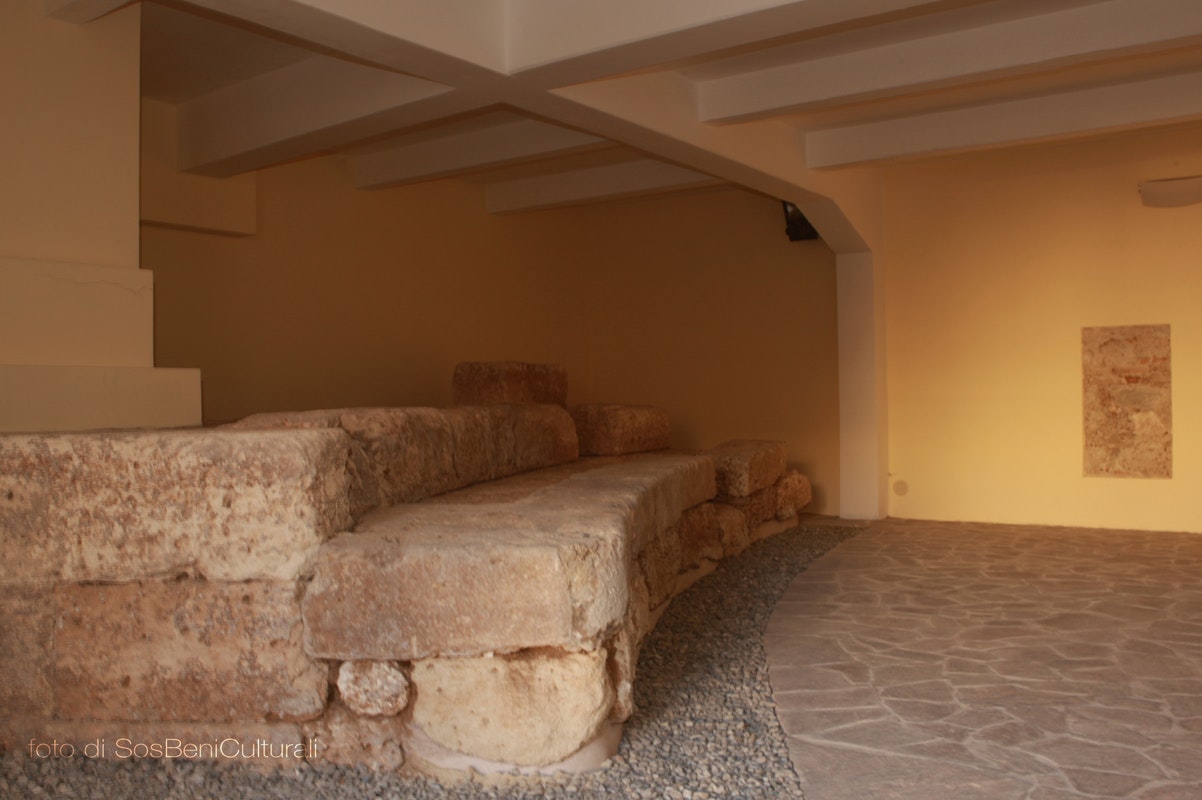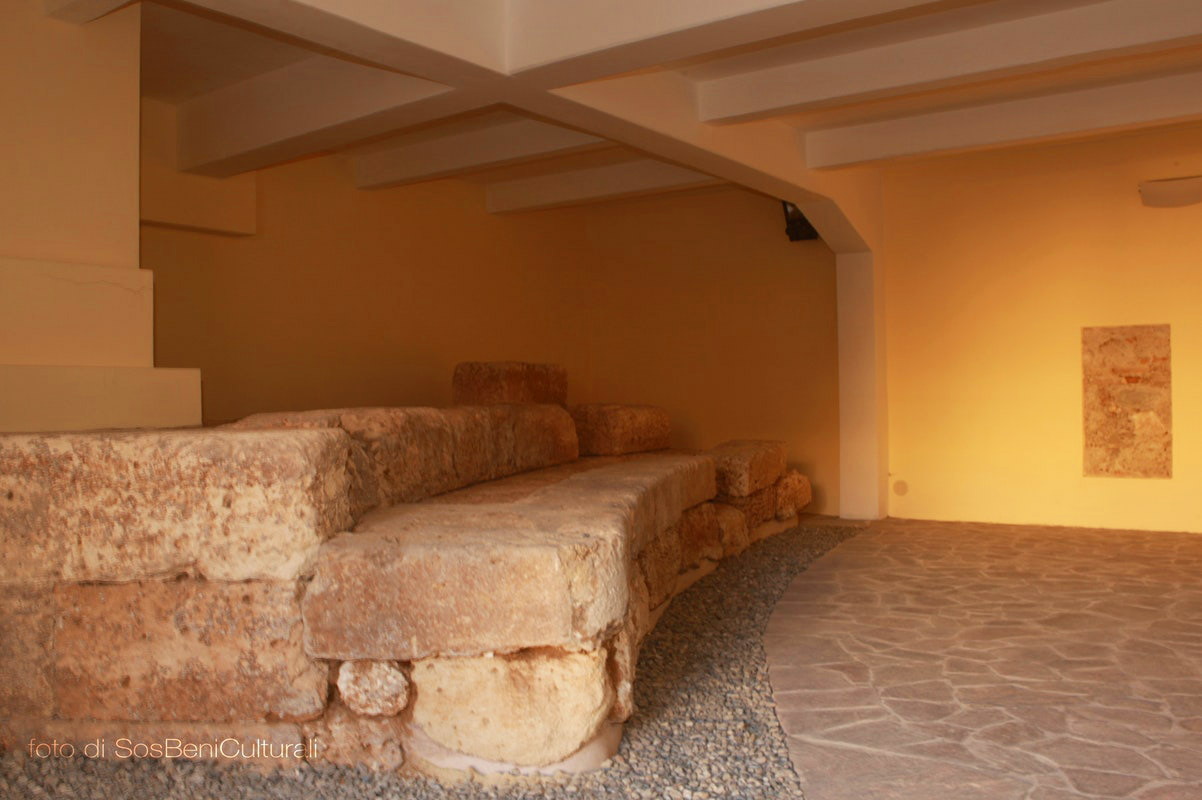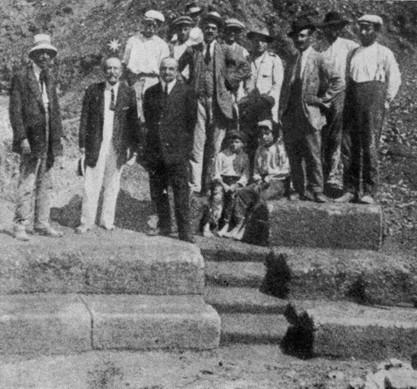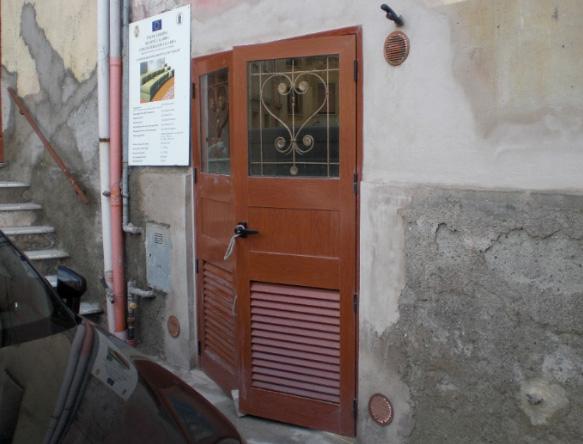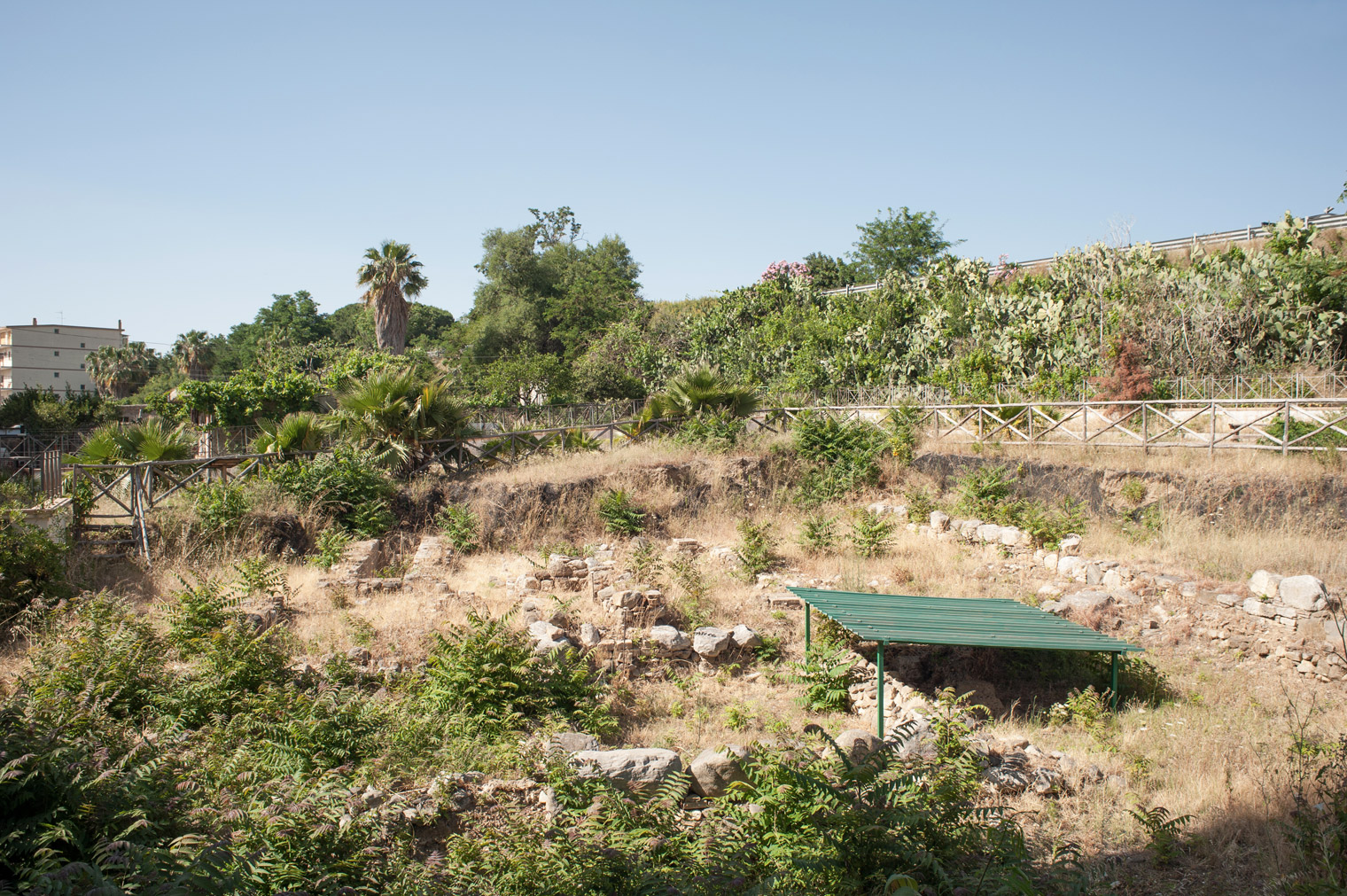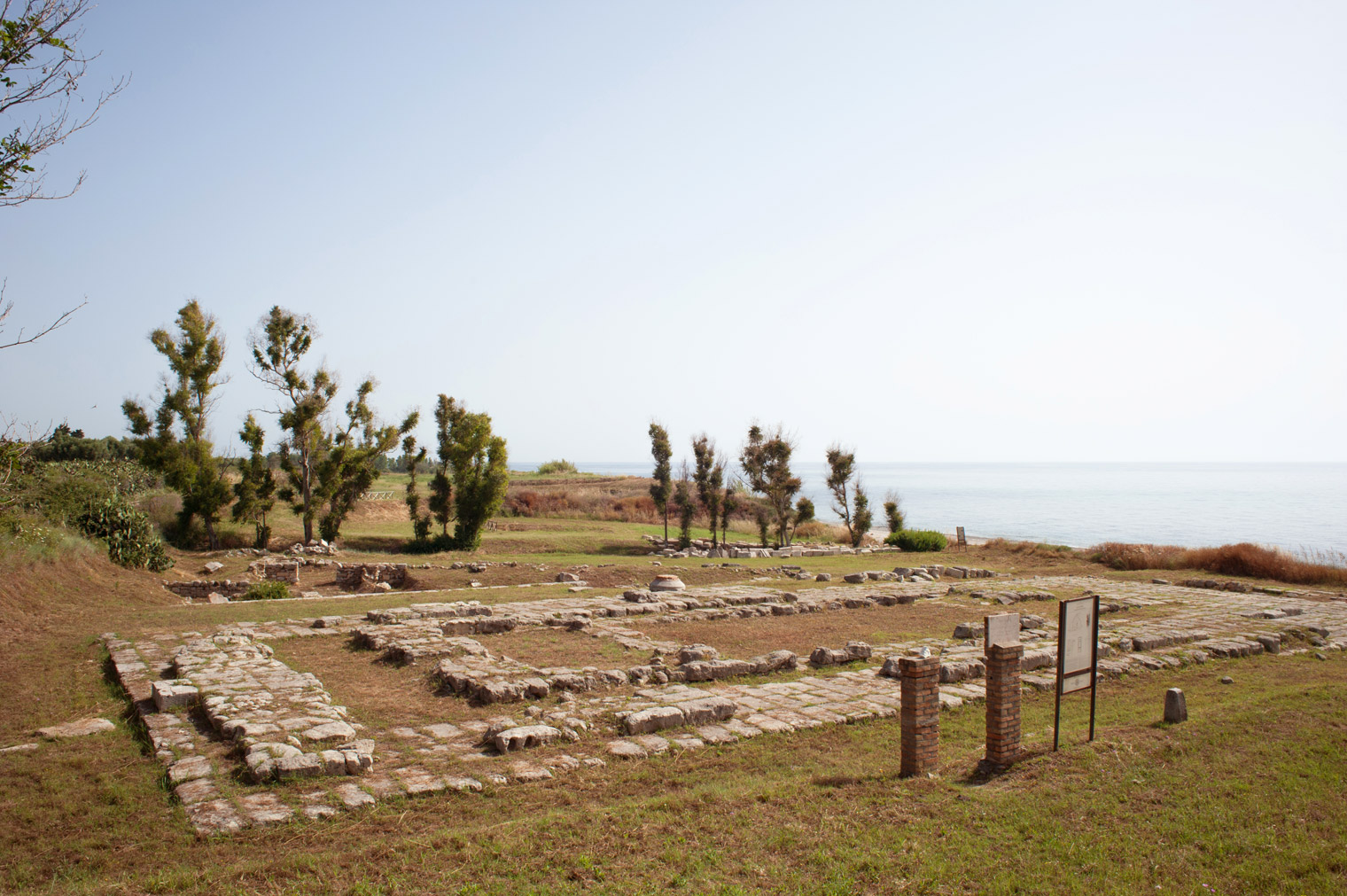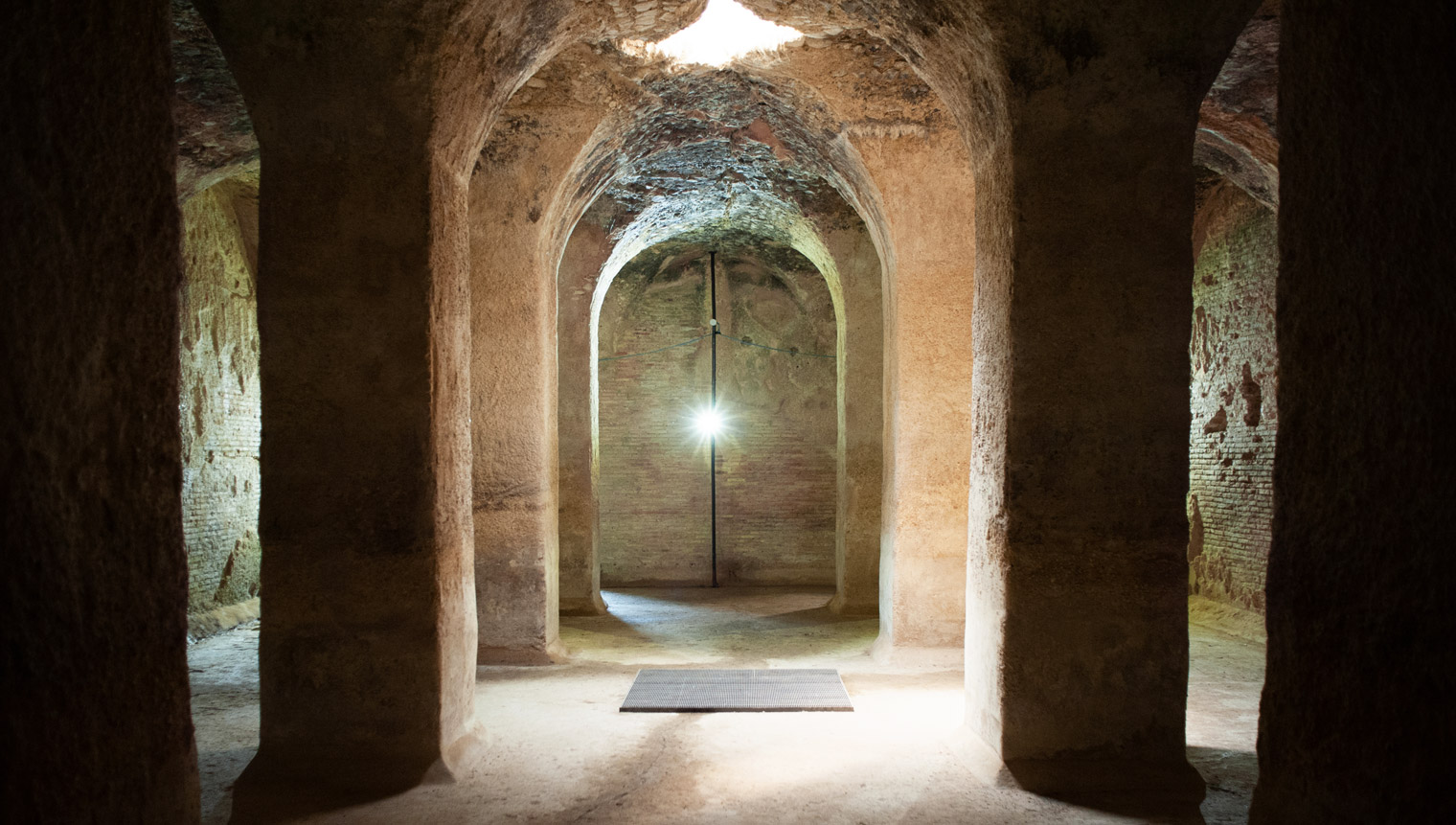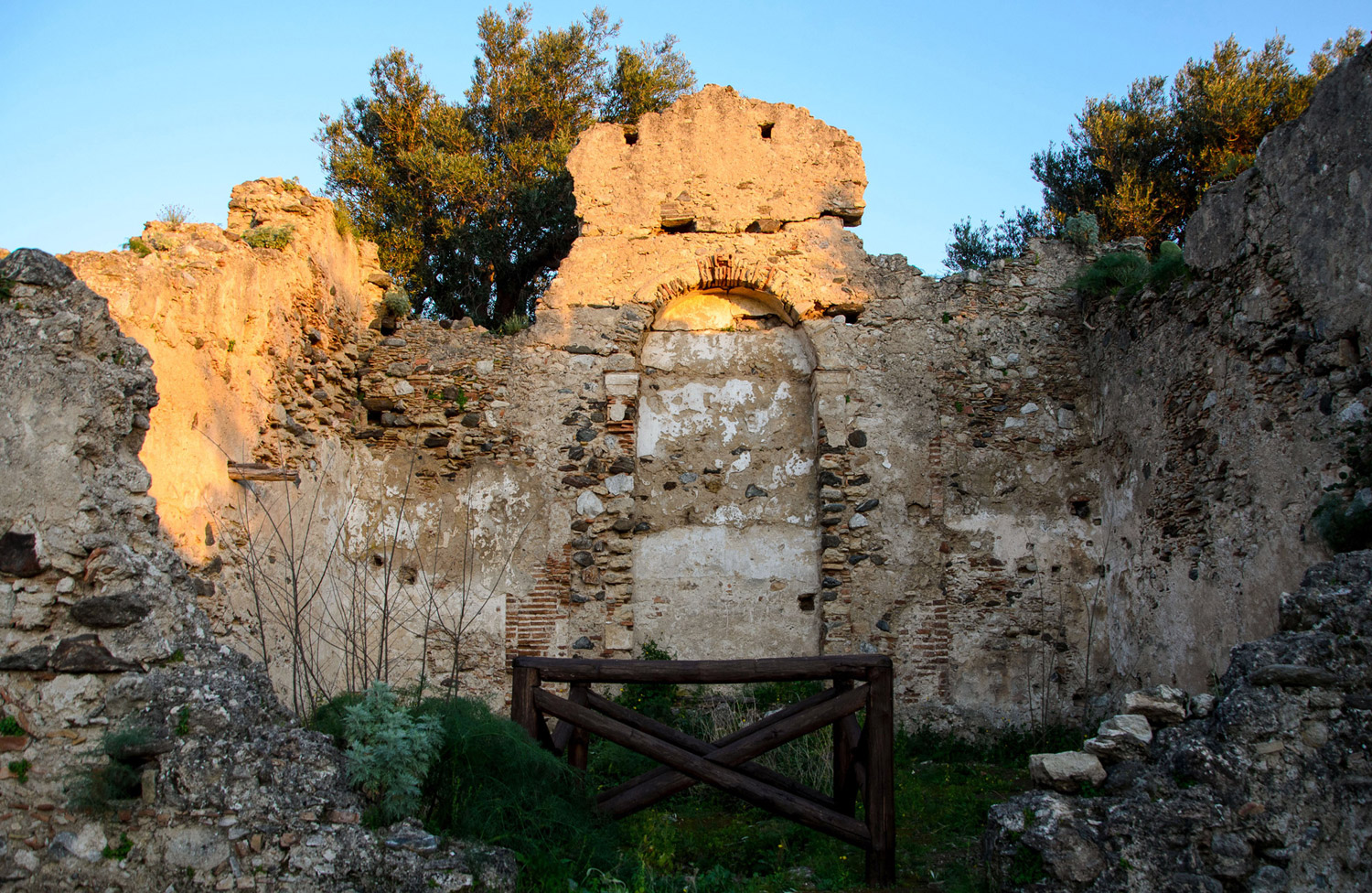In 1920, following some building work inside a residential complex in via XXIV Maggio, the remains of a small theatre or Odeon was discovered, which was dated between the mid-4th and early 3rd century BC by the then Superintendent of Antiquities, Paolo Orsi.

The remains of the kòilon
Two curved steps in local sandstone, divided into two sectors (or wedges) by a five-step stair have been handed down to us. The steps, whose original structure was reconstructed on paper by Orsi, who supposed it was a kòilon (cavea) divided into seven wedges of six intermediate stairways that encircled an orchestra of 20 metres in diameter, were recessed on the side of the hill slope. Instead, there is no trace of flooring or decoration, except for three Ionic clay capitals dating back to the 3rd century BC, perhaps used as an ornament on the scenic front. The Archaeological Superintendence of Calabria now owns the 20th century palace that houses the ruins of Odeon.
Not only music
In addition to hosting musical performances, it is thought that the Odeon could have also served as a Bouleuterion, or the place where political meetings were held. Some historical sources, such as Plutarch, claim that it was the meeting place for the Greeks of Southern Italy and Sicily in 344 BC, with the aim of establishing common strategies against the Carthaginian threat.
Due to the Covid-19 emergency, all visits are temporarily suspended.
To visit the site, please contact the association IN.SI.DE
Tel. 3661019145
Group visits are possible by booking at the contacts indicated.
